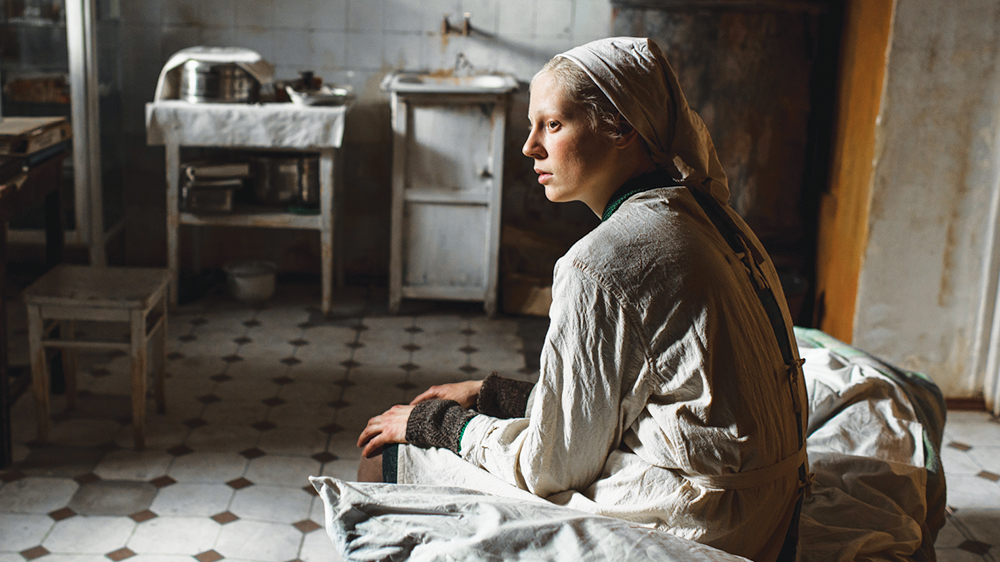How Research Prompted ‘Beanpole’ Director Kantemir Balagov to Shoot in Color
By Jazz Tangcay
LOS ANGELES (Variety.com) – When director Kantemir Balagov first planned his post World War II drama, “Beanpole,” he had intended to shoot in black and white and wanted to show the gray reality of war. As Balagov dug deeper into stories about women who returned from the war, he learned that these women helped escape the gray realities of war through the use of color.
With that in mind and through reading personal journals, Balagov painted a world with saturated bright colors as a way of showing his character’s inner minds. His lead character Iya (Viktoria Miroshnichenko) suffers from PTSD, and the director settled on a color palette that would reflect those inner traumas.
Throughout the film, the major colors are reds and greens. Various shades, whether light or dark, are prominent throughout depending on the scene and what the characters are doing.
Balagov says, “The reds and greens signify a battle between rust and life and between trauma and hope. The colors also signify birth and life.”
The director also selected a lot of close-up shots, allowing the viewer to develop a certain intimacy with the women, but also to capture their emotions. “I wanted to show the aftermath of the war with faces, not with buildings. ”
Balagov breaks down one of the key scenes in the film. It’s a moment that truly captures the loss of youth. It’s about these young women who left when they were teenagers. And he describes it as, “One of the most important scenes in the film.”
The Dance Scene
When I was reading the diaries of women who came back from war, all of them had something in common. There was one recurring theme — that the women all tried to re-adapt their female qualities and learn how to be feminine again. They would put those clues back together and they would sometimes feel uncomfortable or clumsy. They had been wearing these masculine uniforms throughout the war for 4-5 years.
When they came back, they had to re-adapt to their female natures and bodies. There was a sense of an inner disconnection within themselves.
I felt that this was one of the most important scenes in the film. I felt that it represents the loss of youth. We have to understand that those girls left and went to the war when they were 18 and came back in their early twenties. Upon coming back, they tried to recreate their youth, which they have lost, but at the same time had to grow up very fast.
To represent this loss of youth, I thought the best way would be to show physical action and movement. And through this physicality of her twirling, I wanted to represent that lightness through the costume design, down to the sleeves and the lightness of the dress.
The costume designer specifically chose a very light material to capture this lightness.
At the beginning of the scene where Masha (Vasilisa Perelygina) is starting to twirl, she feels that clumsiness. And then there’s a new layer where she feels like she’s lying to herself. It reaches a climax where she’s starting to cry and she feels that she understands it represents a youth that will never be re-created and has been lost. To me personally, it’s a tragedy when someone has lost their grip on youth that can never be recreated.
We decided to film it with the camera on the shoulder, but it was important that the camera would be static and not be shaky and we wanted to focus specifically on her face. We wanted to capture her facial expression, while also trying to capture the physicality of her twirling and find a common ground between the closeups and her body.
One of the main tasks for me as a filmmaker and our cinematographer Kseniya Sereda was to find the distance between the action and us where we were not invading her personal space. That was the biggest challenge to figure out because if you get slightly closer you may be in danger of manipulating her actions.

